Compressed air and industrial solutions
Services offered
-
Consultation
-
Compressed air system audit
-
Compressed air leakage mapping
-
SDT Ultrasonic Equipment
-
Consultation and cost – effectiveness calculations
-
Compressed air production analyzes
-
Systems design
-
Realization of heat recovery projects
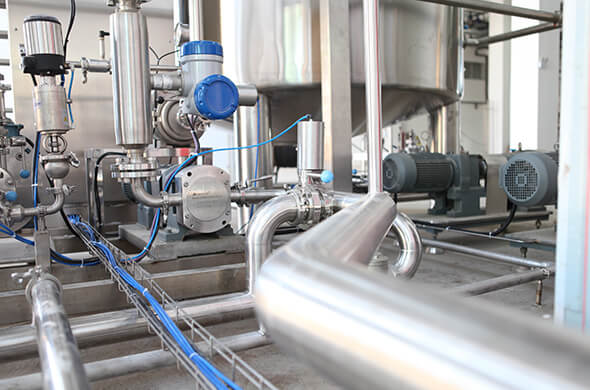
100+
Audited
objects
50+
Optimized
systems
20+
Leak
mappings
<2 yrs
Average
payback period
20-40%
Average
savings
Who are the solutions aimed at?
-
Chemical industry
-
Plastics industry
-
Metal and machinery industry
-
Textile industry
-
Wood industry
-
Electronics industry
-
Energy production
-
Food industry
-
Manufacture of construction materials
-
Paper and printing industry
-
Car dealerships
Improving the existing system
Compressed air systems can achieve significant energy savings by using modern monitoring and control systems as well as by applying simple tips. DeltaE provides advice on how to save compressed air system energy, how to approach the issue strategically for the future and how to eliminate production problems caused by compressed air. The services offered include monitoring of the existing pneumatic system, analysis of measurement results, auditing, consultation and leak mapping to identify possible compressed air saving measures.
Tips for building a new system
Correct dimensioning – motors, actuators and work to be performed must always be accurately measured and dimensioned. System components with too large or too small parameters cause pressure drops in the compressed air system or increase the kinematic losses of the system. Choosing or correcting the right system parameters can save up to 35%.
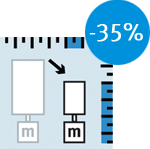
Length of piping – the longer the pipeline, the greater the kinematic energy losses. In addition, longer piping means a higher number of likely leaks. Potential savings 25%.
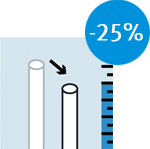
Controller optimization – optimizing cycles and controllers can lead to savings of up to 10%.
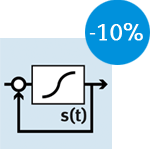
Energy recovery – in compressed air systems, it would be prudent to use the energy generated by braking and redirect it to compressed air production. Saving potential 10%.
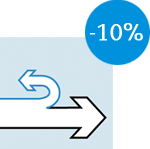
Shutting down the system – continuous operation of the system increases costs by up to 10%. In situations where a change in the state of the system is not necessary, the flow of air into the systems should be shut off. In addition to unnecessary pressure maintenance, the likelihood of leaks is also reduced.
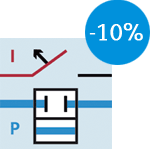
Pressure relief – Reducing the return pressure of the actuator with pressure regulators and, if possible, reducing the operating pressure of the entire system can save up to 20% of energy costs.
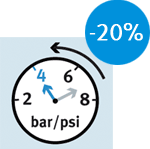
Friction reduction – optimized bearing and control systems can save up to 15%.
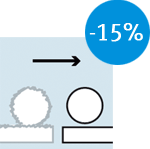
Leakage reduction – Reducing unnecessary losses, especially in existing systems, can save up to 20%. The system should be constantly monitored and audited. The average European compressed air leakage rate is 34% and the actual leakage elimination effect can be up to 50%.
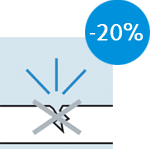
Reduction of movable masses – up to 18% savings potential can be achieved by reducing the masses moved in the work cycle. To do this, it is advisable to use lighter actuators that better meet the needs of the operating cycle or to combine electric drives with a pneumatic system.
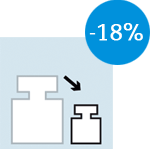
Economical use of air – the inefficient and constant use of unnecessary compressed air can lead to up to 80% higher costs. The main savings are achieved through needs-based management, where the corresponding air is generated only if it is consumed immediately.
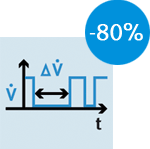
Reduction of pressure drops – Ensuring the required airflow parameters increases the efficiency of the system life cycle, which could result in savings of up to 6%. The measures are optimal piping diameters, less resistance to pressure relief and correctly selected compressed air system components.
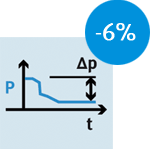
Choosing the right components – choosing the right components can save about 14%. Many measures include one-way cylinders, braked motors, or, for example, the right type of valves and actuators, in order not to generate high pressure during long downtimes and to avoid inefficient performance of the operating cycle.
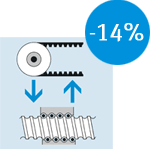
What can be done with ultrasonic in industry?
Detection of air and gas leaks
On average, compressed air leaks consume 34% of the compressed air produced by the system. Because leaks can be odorless, discolored, and difficult to hear in noisy environments, they are usually difficult to detect.
Lubrication of bearings
Both low lubrication and excessive lubrication can make the bearing less efficient. Approximately 90% of the bearings do not last the end of their design life and on average the system efficiency decreases by 5% due to incorrect lubrication.
Inspection of electricity
Using ultrasound to detect an electrical crown reduces the time and risk of electrical work to prevent breakthroughs.
Inspection of steam valves
30% of steam valves do not work as intended due to low maintenance and inspection. The average steam valve can cause nearly € 2,400 in damage per year due to non-torrent operation.
Tightness check
Fluid damage, noise, insufficient environmental conditions, leaks, heat loss, etc. – all can be prevented by carrying out leak tests. The controlled system can be either a car interior, a house exterior wall, a fuel tank, a cargo room or a clinical room.
Inspection of mechanical system components
Inadequate maintenance of mechanical system parts, incorrect lubrication and system installation errors cause impact loads and additional friction in mechanical systems. Friction in systems can increase drive operating costs by up to 5% and increase the risk of accidents.